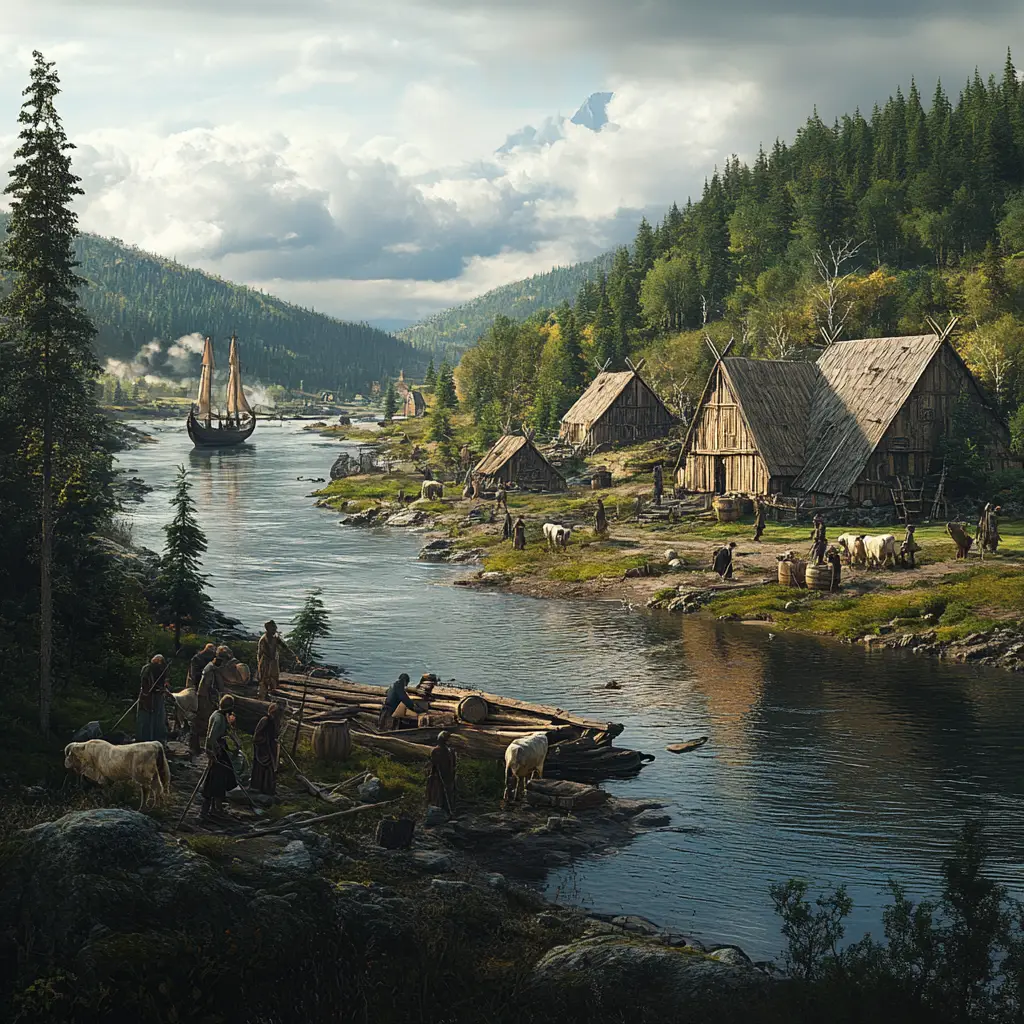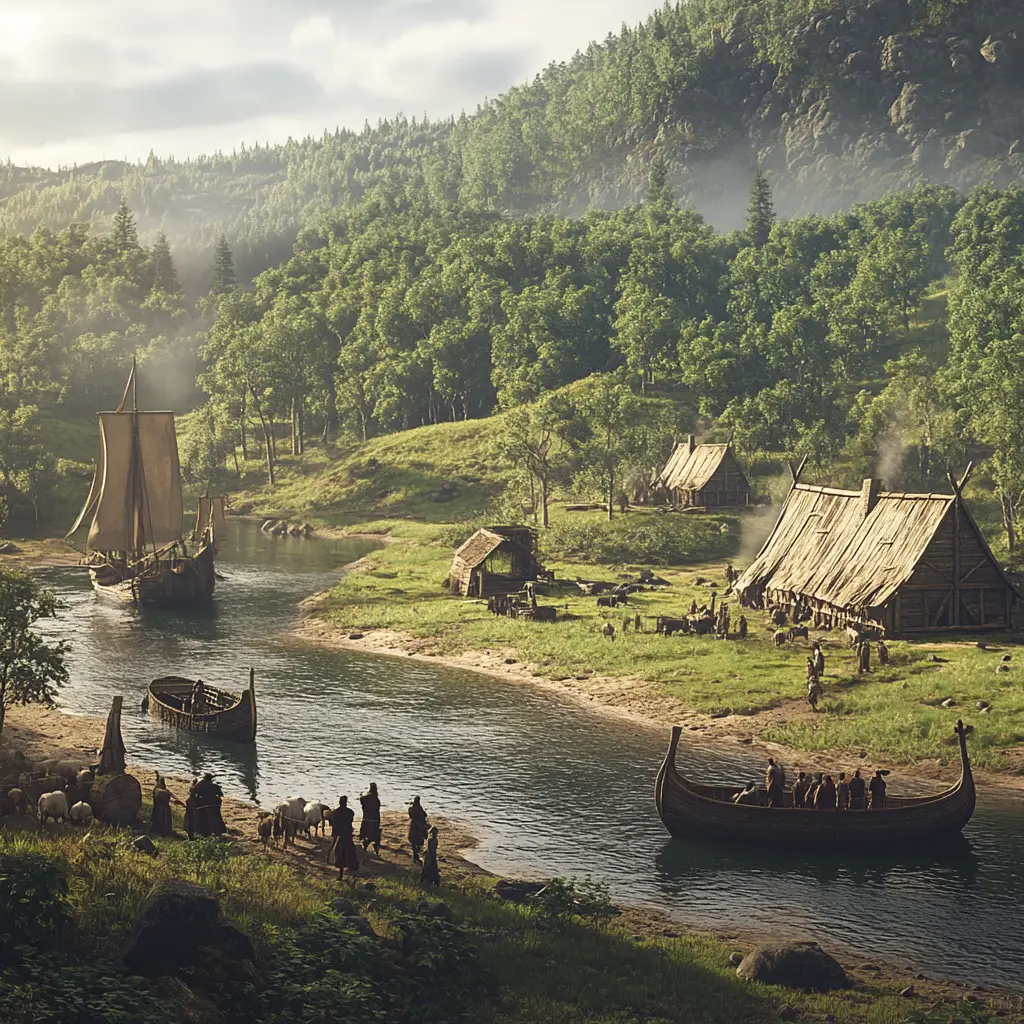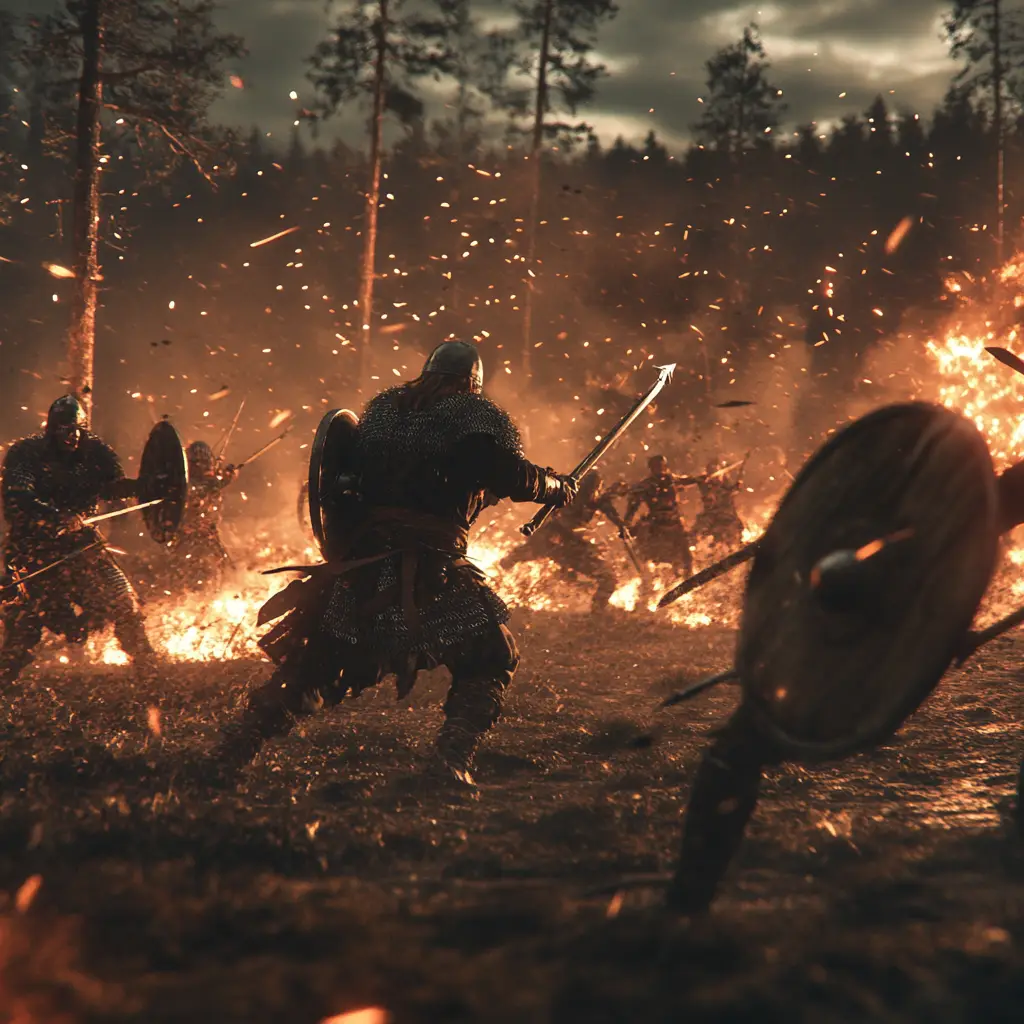Thorfinn Karlsefni’s Expedition to Vinland
Thorfinn Karlsefni’s journey, as detailed in the Saga of the Greenlanders, represents the most ambitious attempt by the Norse to establish a permanent settlement in Vinland. Unlike the previous voyages, which were primarily explorations, Karlsefni’s expedition was carefully planned, well-equipped, and intended for long-term habitation. However, despite his efforts, the settlement ultimately failed due to conflicts with the indigenous population and the harsh realities of life in an unfamiliar land.
Thorfinn Karlsefni: A Leader with Vision
Thorfinn Karlsefni was a wealthy Icelandic merchant and chieftain. During a visit to Greenland, he married Gudrid Thorbjarnardóttir, the widow of Thorstein Eriksson (Leif Eriksson’s brother). Gudrid, known for her wisdom and prophetic dreams, supported Karlsefni’s ambition to travel to Vinland, a land already described as rich and fertile. Inspired by Leif Eriksson’s discoveries, Karlsefni assembled a well-prepared expedition.
The Journey to Vinland
Karlsefni gathered a fleet of three ships and a large group of settlers, including men, women, and livestock—marking the first serious Norse attempt at colonization in North America. Unlike previous expeditions, which were mainly composed of warriors and explorers, Karlsefni’s group included families, craftsmen, and farmers, indicating an intent to establish a self-sufficient community.
After departing from Greenland, the fleet followed the route previously taken by Leif Eriksson, stopping at Helluland (Baffin Island) and Markland (Labrador) before reaching Vinland.
Settlement in Vinland
Upon arrival, Karlsefni and his settlers chose a location near a river with abundant natural resources, including fertile soil, forests, and wild game. They constructed longhouses similar to those in Greenland and Iceland, planting crops and preparing for long-term habitation.
The settlers found the region teeming with wildlife, including large herds of wild animals, which provided ample food. The waters were rich with fish, and the land offered natural materials for shelter and tools. However, despite these advantages, life in Vinland was not without challenges.
Encounters with the Skraelings
One of the most significant events in Karlsefni’s expedition was the first sustained Norse interaction with the indigenous peoples of North America, whom the saga refers to as Skraelings.
Initially, the encounters were peaceful. The Skraelings arrived at the Norse settlement and engaged in trade, exchanging animal pelts for milk and iron tools. However, tensions grew as cultural misunderstandings and fear increased. The Norse were wary of the indigenous people, and conflicts soon erupted.
The saga describes an incident where a bull, owned by the Norse settlers, frightened the Skraelings. This led to hostilities, as the indigenous people viewed the Norse settlement as a threat. In the ensuing conflict, the Skraelings launched an attack on the Norse, using bows and slings to fire projectiles.
Karlsefni and his men defended themselves, but they quickly realized they were outnumbered. The Skraelings’ hit-and-run tactics, combined with their superior numbers, made the Norse position untenable.
Freydís Eiríksdóttir’s Role in the Battle
During one of the battles, Freydís Eiríksdóttir, Erik the Red’s daughter, played a pivotal role in rallying the Norse forces. According to the saga, when the Norse warriors began to retreat in fear, Freydís grabbed a sword, exposed her chest, and struck her own body, letting out a terrifying war cry. This act of defiance stunned both the Norse and the Skraelings, giving Karlsefni’s men a chance to regain their footing.
Despite this moment of resistance, the Norse realized they could not hold their settlement against continued attacks.
Abandoning Vinland
Faced with constant hostility from the Skraelings and the realization that their small community was vulnerable, Karlsefni made the difficult decision to abandon the settlement. The Norse dismantled parts of their camp, loaded their ships with supplies, and set sail back to Greenland.
The expedition had proven that Vinland was a land rich in resources, but it was also clear that the Norse could not coexist peacefully with the indigenous population. Unlike their settlements in Greenland and Iceland, where they had encountered no significant opposition, Vinland was already inhabited by a people who defended their land fiercely.
Return to Greenland and Iceland
Karlsefni and his followers returned to Greenland and later moved to Iceland, where he and Gudrid settled permanently. Their son, Snorri Thorfinnsson, was born during the expedition and is often considered the first European child born in North America.
Although Karlsefni’s attempt to colonize Vinland ultimately failed, his expedition left a lasting legacy. His voyage confirmed the existence of lands west of Greenland, and his story contributed to the rich tapestry of Norse sagas.
Legacy of Thorfinn Karlsefni’s Expedition
Karlsefni’s journey remains one of the most significant episodes in Viking exploration history. His attempt to establish a settlement in Vinland provides a rare glimpse into early European contact with North America. While the Norse presence in Vinland was short-lived, archaeological evidence at L’Anse aux Meadows in Newfoundland suggests that Viking explorers did, in fact, reach North America around the year 1000.
The Saga of the Greenlanders, alongside the Saga of Erik the Red, preserves this remarkable chapter in history, showing the ambition, resilience, and limitations of Norse expansion beyond the known world.


